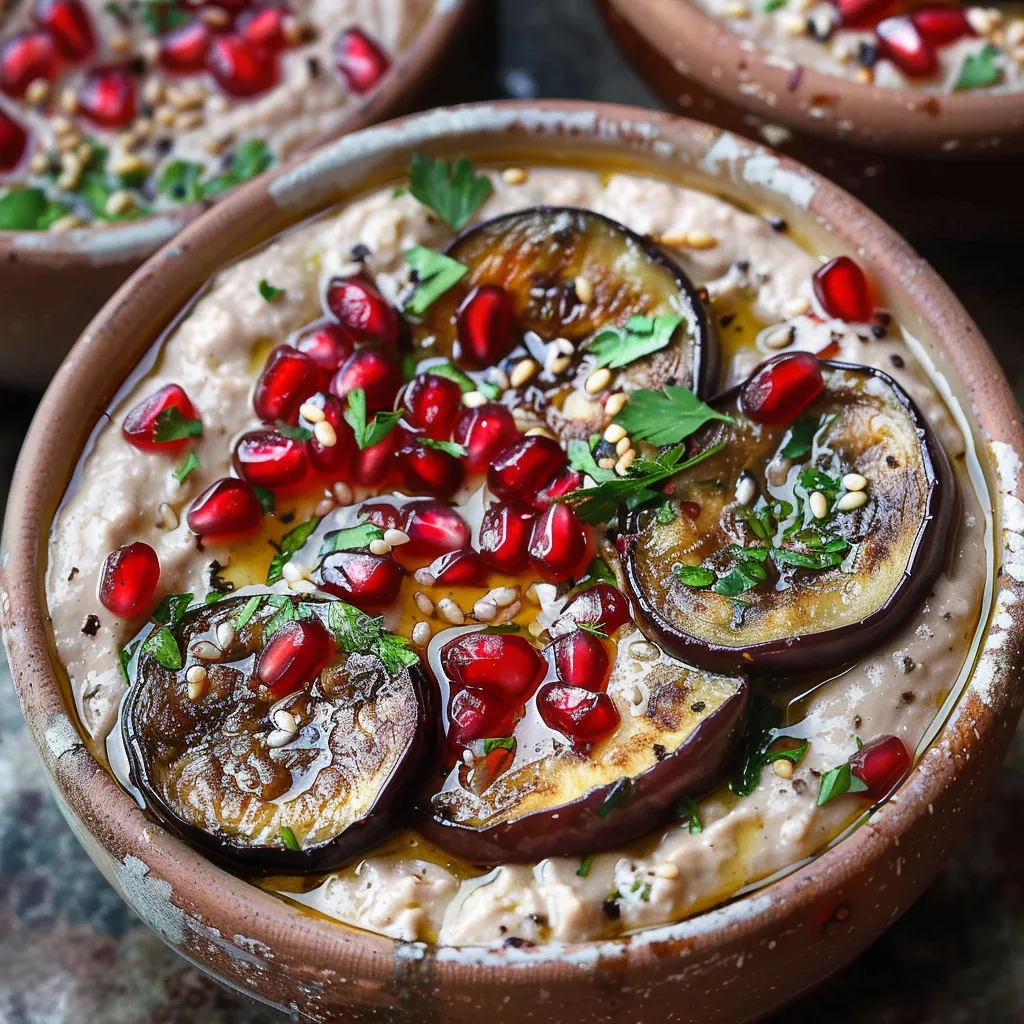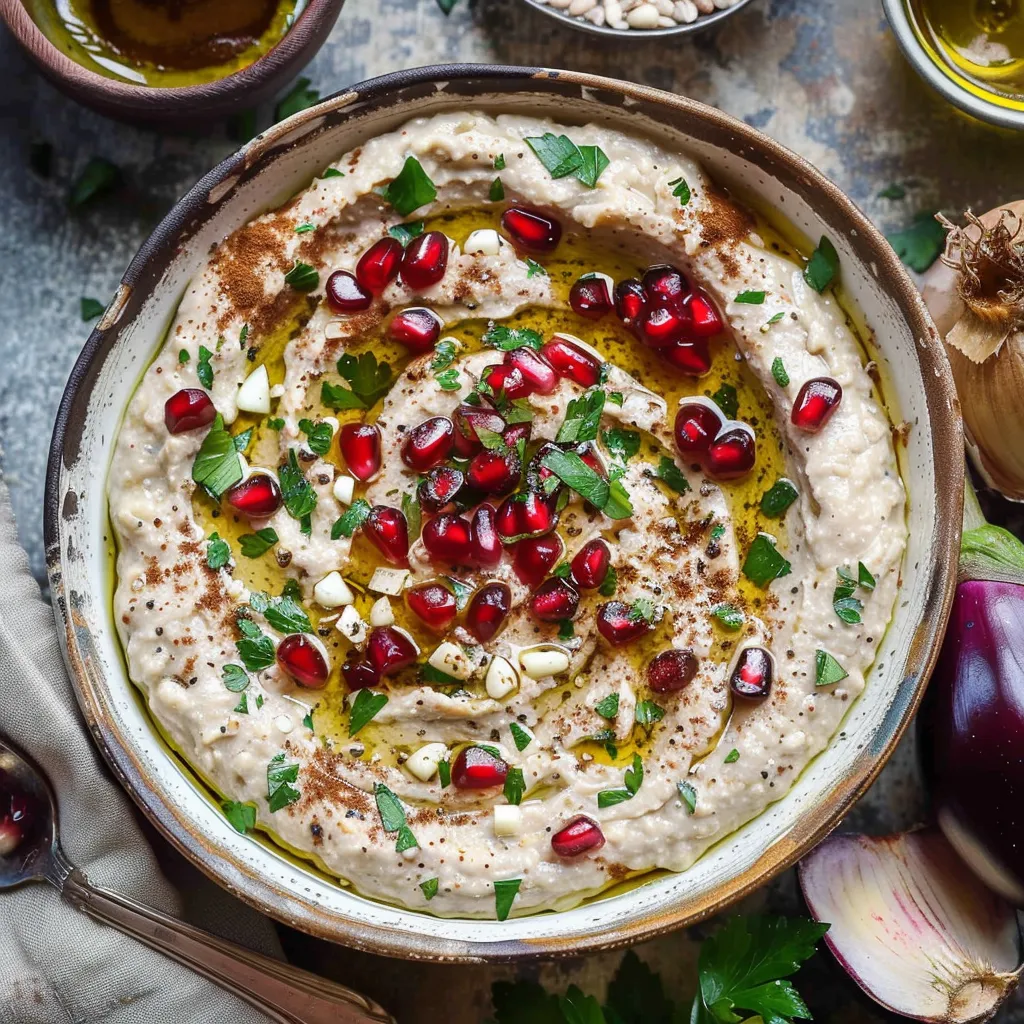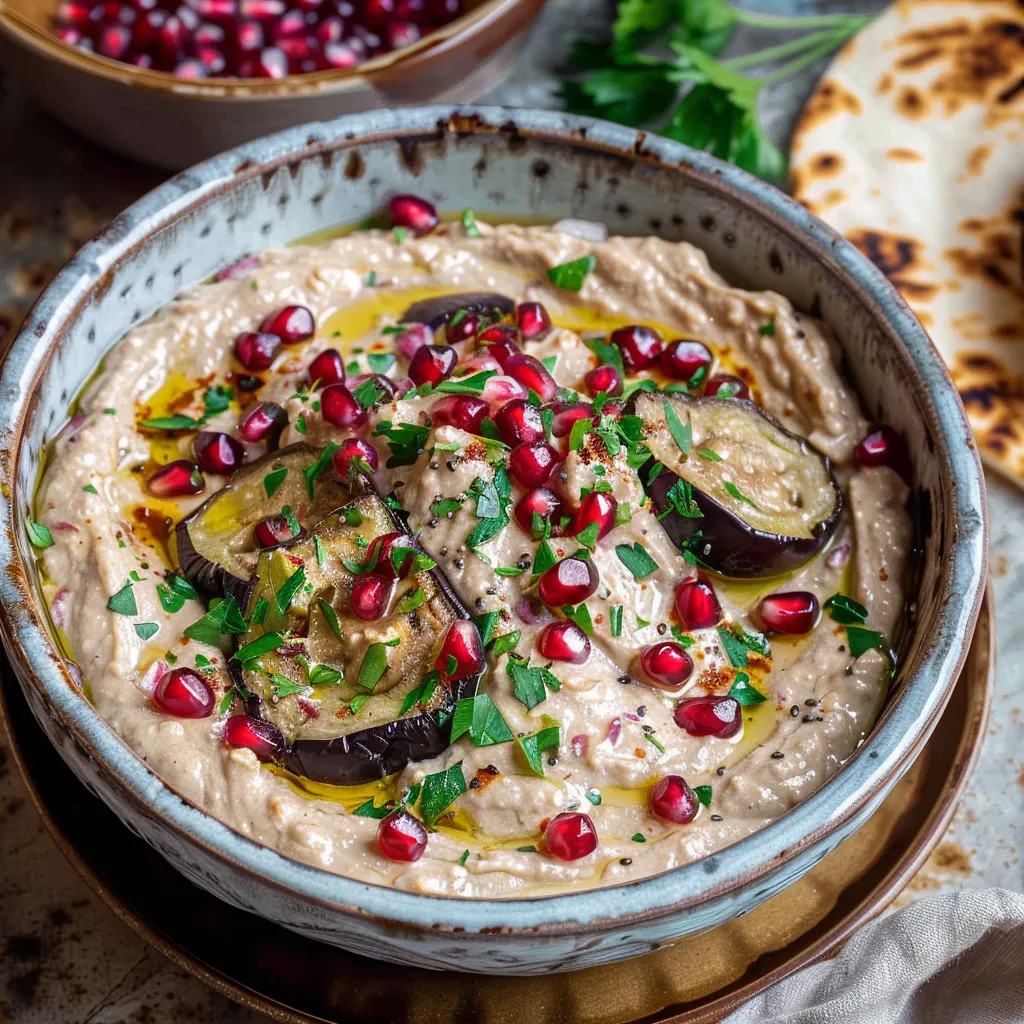 Pin to Favorites
Pin to Favorites
The first time I tasted authentic Mutabbal in a tiny Lebanese restaurant, I was captivated by its velvety texture and complex smoky flavor – so different from the store-bought versions I'd tried before. This humble eggplant dip achieves a perfect balance between the deep, caramelized notes of roasted eggplant and the bright acidity of lemon, all wrapped in a creamy blend of yogurt and tahini that somehow manages to feel both indulgent and light at the same time.
When I first made this for friends, my Egyptian neighbor tasted it and smiled, saying, "This reminds me of my grandmother's kitchen." That's the highest compliment a Middle Eastern dish can receive – capturing that authentic, homemade quality that connects to tradition and memory.
Essential Ingredients and Selection Tips
- Eggplants: Choose firm, glossy eggplants with smooth skin and substantial weight for their size. Globe eggplants work best for this recipe, though Italian eggplants can also be used.
- Tahini: Look for tahini made from hulled sesame seeds with a light color and pourable consistency. Stir well before measuring to reincorporate the separated oils.
- Greek Yogurt: Full-fat Greek yogurt adds creaminess and tanginess, while labneh can be used for a thicker, more authentic texture.
- Garlic: Fresh garlic is essential. Grating or crushing it ensures a smooth incorporation without overpowering the dip.
 Pin to Favorites
Pin to Favorites
The quality of your tahini significantly impacts the final flavor. I once made this with an old, bitter tahini and had to start over – the bitterness overwhelmed everything else. Fresh, high-quality tahini from Middle Eastern or Mediterranean markets makes a remarkable difference in the final dish.
Detailed Cooking Instructions
- Prepare Eggplants for Roasting:
- Preheat the broiler and position the rack in the upper third of the oven. Wash and dry 2 medium eggplants (about 2 pounds total), then pierce them several times with a fork to prevent bursting.
- Roast to Perfection:
- Place the eggplants on a foil-lined baking sheet and broil for 45-50 minutes, turning every 15 minutes until fully charred and collapsed.
- Cool and Extract the Flesh:
- Let the eggplants cool for 15 minutes. Cut open lengthwise, then scoop out the soft flesh, leaving behind the charred skin.
- Drain Thoroughly:
- Place the eggplant flesh in a fine-mesh strainer over a bowl and press gently to release excess liquid. Let it drain for at least 10 minutes.
- Combine the Base Ingredients:
- Transfer the drained eggplant to a bowl. Add 2 minced garlic cloves, 3 tbsp tahini, 1/4 cup Greek yogurt, 2 tbsp lemon juice, and 1/2 tsp salt. Adjust proportions to taste.
- Achieve the Perfect Texture:
- Whisk the mixture vigorously for 2 minutes until light and fluffy. Avoid using a food processor to retain slight texture.
- Rest for Flavor Development:
- Cover and refrigerate for at least 30 minutes, preferably 2 hours, for the flavors to meld.
- Serve with Style:
- Spread on a plate, drizzle with olive oil, and garnish with sumac, pomegranate seeds, or chopped parsley. Serve with warm pita bread.
I discovered the importance of proper draining after my first attempt at Mutabbal resulted in a runny, slightly bitter dip. An Egyptian friend later showed me how to press and drain the eggplant thoroughly, transforming both the texture and flavor of the finished dish.
During a trip to Jordan, I watched an elderly woman prepare Mutabbal in her home kitchen. When I asked about her technique of repeatedly pressing the eggplant, she explained that her grandmother had taught her that "the more patience you have with the eggplant, the more it rewards you." That wisdom has stayed with me – the careful attention to each step, from thorough roasting to patient draining, truly does transform this humble vegetable into something extraordinary.
 Pin to Favorites
Pin to Favorites
Frequently Asked Questions
- → What's the difference between mutabbal and baba ganoush?
- Though often confused, mutabbal and baba ganoush are distinct dishes. Mutabbal is simpler, combining roasted eggplant with tahini, yogurt, and lemon juice. Baba ganoush typically includes additional ingredients like tomatoes, pomegranate molasses, walnuts, and various herbs and spices, but may not contain yogurt. Regional variations exist throughout the Middle East, with some places using the terms interchangeably.
- → Can I make mutabbal without a broiler?
- Yes, you have several options. You can roast the eggplants in a regular oven at 425°F (220°C) for about 45-60 minutes until very soft. For the authentic smoky flavor, you can also char the eggplants directly over a gas flame, on a grill, or even use a kitchen torch to char the skin after baking.
- → How can I make this recipe dairy-free or vegan?
- This recipe is easily adapted for dairy-free or vegan diets. Simply substitute the Greek yogurt with a plant-based yogurt alternative made from coconut, almond, or soy. Ensure your tahini is pure (just ground sesame seeds) and you'll have a delicious vegan version of mutabbal.
- → Why is my mutabbal bitter?
- Bitterness can come from the eggplant's skin or from using old tahini. Ensure you're only using the flesh of the eggplant, not the charred skin. Also, make sure your tahini is fresh – old tahini can develop a bitter taste. Adding a bit more lemon juice or yogurt can help balance mild bitterness.
- → How long will mutabbal keep in the refrigerator?
- Properly stored in an airtight container, mutabbal will keep for 3-4 days in the refrigerator. The flavors often improve after a day as they meld together. Add the garnishes (olive oil, pomegranate seeds, parsley, and sumac) just before serving for the freshest presentation.
